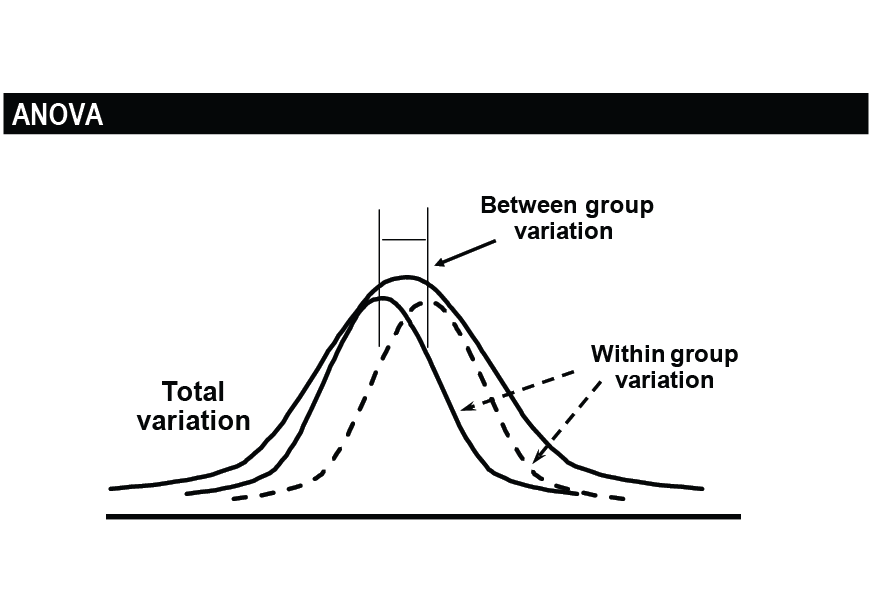What is Analysis of Variance?
Analysis of Variance (ANOVA) is a statistical technique for analyzing data that tests for a difference between multiple (more than two) population means.
The null hypothesis will state that there are no differences among the population means.
Ho: μ1 = μ2 = μ3
The alternative hypothesis will specify the following:
Ha: At least one mean is different.
This analysis determines if the differences between the averages of the factor levels are greater than could reasonably be expected from the variation that occurs within the level.
Using ANOVA requires the following:
- A response that is continuously taken from measurements of the factors sampled.
- A factor that is categorical with different values (called levels) chosen for the factor.
- Independent and normally distributed data.
- Population variances are equal across all levels of the factor.

For more information on ANOVA and how Juran can help you leverage it to improve business quality and productivity, please get in touch with the team.
| Check out Juran’s LSS Training Courses |
| Lean Six Sigma Yellow Belt |
| Lean Six Sigma Green Belt |
| Lean Six Sigma Black Belt |
| Upgrade to Black Belt |
| Lean Six Sigma Master Black Belt |
| Lean Expert Program |






